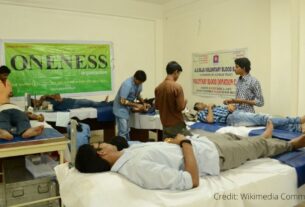A number of psychiatrists in Bangalore don’t believe in the existence of Dissociative Identity Disorder. Many DID patients are dismissed as fakers.
Yamini Chincholi
Trisha Dey (24), a techie in Bangalore was diagnosed of Dissociative Identity Disorder (DID). She describes DID as- “We feel like we all are trying to drive a car at the same time. The body is the car. We understand it is only one, but we need it because it contains us. We wish we each had different bodies too. We are a diagnosed system of five personalities.”
Experts in the fields of psychiatry and psychology in Bangalore are divided in their opinion about the existence of dissociative identity.
Dr MJ Thomas of Sagar Hospital said, “I have never heard of DID. No one can switch personalities unless they manipulate. It is mostly in the movies and media. I don’t believe in it.”
Ms Shreya Chatterjee is a therapist at Rishabh Poly Clinic. She has diagnosed three individuals with DID in her career. “It is not easy to fake DID. If there are two personalities, say A and B, then personality A will not remember events occurring when B is conscious, and vice versa. That is a key point in differentiating fakers from real cases,” she said.
Dr. Dharmendra of Manasa Neuropsychiatric Hospital is giving therapy to Trisha Dey every month. “I understand and validate all of Trisha’s personalities. Not much is known about DID, so I answer her questions in the easiest way possible and encourage her to accept herself the way she is,” he explained.
The Diagnostic and Statistical Manual (DSM) by the American Psychiatric Association (APA) has recognized dissociative identity disorder under Section II – ‘dissociative disorders’ category (Page 291).
DSM-5 and Psychology Today says that DID is developed in those individuals who have experienced intense childhood trauma. The brain dissociates into different personalities to cope with memories of early abuse, usually sexual abuse.
Dr Mala Sridhar, HOD of Psychology, NMKRV College for Women said, “I am extremely sceptical about it. It could be an act, regression or faking. People want to impress and cheat other people. I call them charlatans. All this is performance-oriented. Coherence is impossible for individuals like these if at all they exist. It’s definitely unnatural.”
Trisha said, “We were told we are not real. At first, psychiatrists believed we were acting. When they found out it’s real, they ghosted us or referred to another doctor. We were being misdiagnosed as mood disorder and then Schizophrenia for 10 years, in Kolkata and then in Bangalore. If everyone denies our existence, then there is no point in living. Not knowing what was wrong for years made us suicidal.”
Statistics show the rate of dissociative identity disorder is 0.01% to 1% of the general population.
The All India Institute of Medical Sciences, New Delhi (AIIMS) conducted a study about the current status of multiple personality disorder (as DID was called then) in 1989. The abstract states that an individual showing symptoms of DID is likely to be diagnosed of possession syndrome rather than DID. Transcultural differences in diagnostic practices are also discussed. A research conducted by the Indian Journal of Psychiatry in 1981 states that possession syndrome was an epidemiological study in west Karnataka. 90% of the respondents believed in possession. The Psychiatry and Clinical Neurosciences Journal conducted a study in 2016 stating that separating spirit possession from dissociative trance will be a challenge for cultures in transition, namely India. The abstract states that a framework will help enable clinicians to better understand dissociation and possession. The diagnostic process of DID is through the criteria of the DSM and tests like Thematic Apperception Test (TAT) and Multiscale Dissociation Inventory (MDI).
The Trauma and Mental Health Report from Psychology Today has found that many professionals do not get enough training in assessment of DID. A true DID patient would have symptoms throughout their life. There are reliable structured clinical interviews for dissociative disorders that have been shown to distinguish between faking and true disorders.




